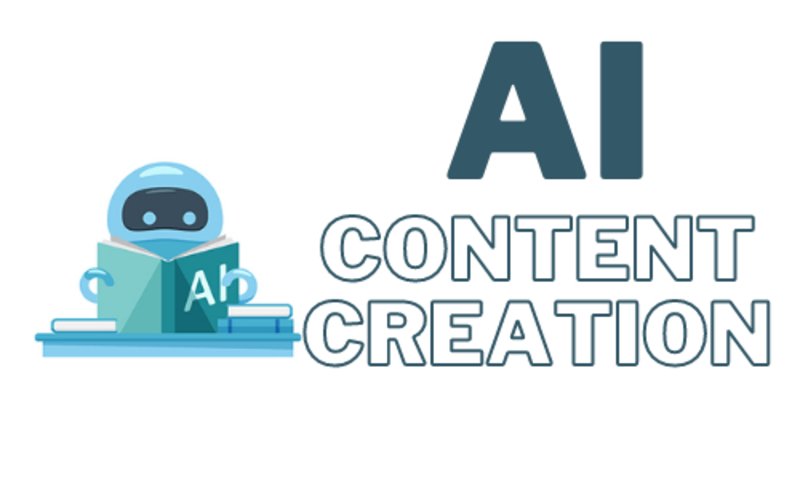In today’s fast-paced digital world, gaining a competitive edge is essential for businesses. Traditional marketing strategies are no longer enough. Companies need to leverage advanced tools to understand their audience better, make informed decisions, and stay ahead of the competition. This is where AI-driven marketing analytics comes into play. By integrating AI into marketing strategies, businesses can unlock new insights, optimize campaigns, and achieve unprecedented growth. This article explores how AI-driven marketing analytics can provide a competitive advantage and offers actionable tips for implementation.
Understanding AI-Driven Marketing Analytics
What is AI-Driven Marketing Analytics?
AI-driven marketing analytics uses artificial intelligence to collect, analyze, and interpret data related to marketing efforts. Unlike traditional analytics, which rely on manual processes and historical data, AI-driven analytics uses machine learning algorithms to analyze large datasets in real-time. This allows for more accurate predictions, deeper insights, and automated decision-making.
How AI Enhances Marketing Analytics
Artificial Intelligence enhances marketing analytics by offering capabilities that surpass traditional methods. This not only includes processing vast amounts of data at unprecedented speeds but also interpreting complex patterns that can inform strategic decisions.
Real-Time Data Analysis
One of the most significant advantages of AI-driven marketing analytics is real-time data analysis. Traditional marketing analytics often rely on historical data, which means businesses are always looking at what has already happened. AI, however, can process data as it comes in, allowing businesses to make decisions based on the most current information available.
For startup founders, this means the ability to react instantly to market trends, customer behavior changes, and campaign performance. Real-time data analysis can highlight emerging opportunities or potential issues before they become significant problems, enabling a proactive approach to marketing strategy.
Predictive Modeling
Predictive modeling is another powerful aspect of AI-driven marketing analytics. By analyzing past data, AI can make accurate predictions about future trends and behaviors. This capability is invaluable for planning marketing campaigns, managing inventory, and forecasting sales.
Startup founders can leverage predictive modeling to anticipate customer needs and tailor their marketing strategies accordingly.
For instance, if predictive models indicate a surge in demand for a particular product, a startup can adjust its marketing efforts and stock levels to capitalize on this trend. Predictive analytics can also identify which customers are most likely to convert, allowing businesses to target their marketing efforts more effectively.
Sentiment Analysis
Sentiment analysis is an AI technique that interprets and categorizes emotions within customer feedback. This includes reviews, social media comments, and other forms of user-generated content. Understanding customer sentiment can provide startups with valuable insights into how their brand is perceived and highlight areas for improvement.
By integrating sentiment analysis into their marketing analytics, startup founders can gain a deeper understanding of customer satisfaction and brand loyalty. This information can guide customer service improvements, product development, and overall marketing strategy. For example, if sentiment analysis reveals a common complaint among customers, addressing this issue promptly can enhance customer satisfaction and prevent negative word-of-mouth.
Customer Journey Mapping

AI-driven marketing analytics can map out the entire customer journey, from the first interaction to the final purchase and beyond. This comprehensive view helps businesses understand how customers move through the sales funnel and where they might encounter obstacles.
For startups, customer journey mapping can identify key touchpoints that influence purchasing decisions. By analyzing this data, startups can optimize each stage of the customer journey to improve conversion rates and customer retention. This might involve personalizing content at critical points, simplifying the checkout process, or providing additional support where customers frequently drop off.
Dynamic Pricing
AI-driven marketing analytics can also enable dynamic pricing strategies. By analyzing factors such as demand, competition, and customer behavior, AI can suggest optimal pricing strategies in real-time. This allows businesses to maximize revenue and stay competitive in fluctuating markets.
Startup founders can use dynamic pricing to respond quickly to market changes. For instance, if AI analysis shows a competitor has lowered their prices, a startup can adjust its pricing strategy accordingly to remain competitive. Conversely, during periods of high demand, businesses can increase prices to maximize profits without losing customers.
Automated Marketing Decisions
Automation is a core benefit of AI-driven marketing analytics. AI can automate routine marketing decisions, freeing up time for marketers to focus on strategic initiatives. This includes tasks such as email marketing, social media posting, and even ad placement.
For startups, automation can significantly increase efficiency and consistency. AI can ensure that marketing campaigns are executed flawlessly, with the right message delivered to the right audience at the right time. This not only improves campaign effectiveness but also allows small teams to achieve more with limited resources.
Strategic Integration of AI Tools
To fully harness the power of AI-driven marketing analytics, startups need to integrate AI tools strategically into their marketing stack. This involves selecting tools that complement existing systems and workflows, ensuring seamless data flow and comprehensive analytics capabilities.
Startup founders should focus on tools that offer robust integration features, such as APIs and connectors, to link various marketing platforms. This ensures that data from different sources can be aggregated and analyzed cohesively, providing a holistic view of marketing performance. Regularly reviewing and updating these integrations can keep the system running smoothly and adapt to evolving business needs.
Embracing Continuous Learning and Adaptation
The field of AI is constantly evolving, with new algorithms and techniques emerging regularly. Startup founders should foster a culture of continuous learning and adaptation within their marketing teams. Staying informed about the latest developments in AI and experimenting with new tools and strategies can provide a competitive edge.
Encourage your team to attend industry conferences, participate in webinars, and read up on the latest research in AI and marketing analytics. Creating a learning environment where experimentation is encouraged can lead to innovative solutions and improved marketing performance.
Balancing AI and Human Insight
While AI-driven marketing analytics provides powerful insights and automation capabilities, it’s essential to balance these with human intuition and creativity. AI can process data and identify patterns, but human marketers bring context, empathy, and strategic thinking that AI cannot replicate.
Startup founders should ensure that their teams use AI as a tool to enhance their decision-making processes rather than relying on it entirely. Combining AI insights with human expertise can lead to more nuanced and effective marketing strategies.
Regularly reviewing AI-generated insights and validating them against human experience can ensure that marketing efforts remain aligned with business goals and customer expectations.

Leveraging AI for customer journey mapping in marketing analytics allows companies to better understand and anticipate customer behaviors and preferences. AI algorithms process vast amounts of data from various touchpoints, identifying patterns and predicting future interactions based on past behavior.
This deep insight enables marketers to craft strategies that are not only responsive but also proactive, effectively guiding potential customers towards conversion. The clarity provided by AI-driven journey mapping empowers businesses to deliver precisely timed interventions, enhancing the customer experience and increasing the likelihood of successful outcomes across all stages of the marketing funnel.

AI is changing how businesses understand the customer journey by predicting what customers will do next. Instead of just looking at past actions, AI tools like predictive analytics and machine learning find patterns that show where customers are likely to go.
AI looks at data from every touchpoint like emails, social media, and even when customers are not active, then suggests the best way to reach out. This helps businesses connect at the right time.
Tools like Salesforce Einstein and Adobe Sensei use these insights to keep customers engaged and improve their experience in ways that go beyond regular tracking.

As the founder of Ronkot Design, I have leveraged AI and data analytics to gain a 360-degree view of our customers’ journeys. Our marketing automation platform tracks every digital interaction, from website visits to email opens to social shares.
Combining this data with customer relationship management information and call center logs provides a comprehensive understanding of how customers find and engage with our brand.
We have found that customers who view three or more pages on our site and download an educational resource are 40% more likely to become long-term clients. Armed with this insight, we optimized our site content and email nurturing campaigns to encourage higher engagement and guide customers to these valuable resources.
This increased our sales qualified lead rate by over 30% last quarter. AI has also helped us determine our most effective marketing channels so we can allocate budget accordingly. For example, we finded that customers who come to us through LinkedIn advertising have a 20% higher lifetime value.
As a result, we have doubled our investment in LinkedIn ads over the last year, which has driven a 35% boost in sales from that channel. Using data and AI to map the customer journey at Ronkot Design has provided an opportunity to deliver more personalized experiences, anticipate needs, and guide customers to the solutions they require.
The insights we have gained into the nuances of our customers’ lifecycles have been instrumental to achieving sustainable growth. Overall, AI and customer journey mapping should be a priority for any business looking to gain a competitive edge.

As a digital marketing agency founder, I’ve leveraged AI for customer journey mapping with great success. We built a custom AI algorithm that analyzes website interactions, email opens, social media engagement and more to map a customer’s journey from initial touchpoint to conversion and beyond.
For example, we found customers who read our educational content and then contact us for a demo are very likely to become long-term clients. By optimizing the customer experience at these key stages, we increased demo requests by 34% and sales by 27%.
AI also helps us determine the value of different marketing channels so we can allocate resources effevtively. We finded customers from social media have a higher lifetime value, so we tripled our social ad spend.
Targeted social campaigns then led to a 22% increase in high-value customers. Understanding the customer journey end-to-end gives us a competitive edge. We can anticipate needs, personalize messaging and be helpful at the right times.
For one client, implementing a custom onboarding journey based on customer data boosted retention 16% in 6 months. AI and customer journey mapping have driven substantial growth for my agency and clients.

Enhanced Data Analysis
One of AI’s most significant advantages is its ability to analyze vast amounts of data from multiple sources, including website interactions, social media engagement, and purchase histories.
By utilizing AI-driven analytics tools, we can identify patterns in customer behavior that reveal the paths customers take from awareness to conversion. Machine learning algorithms allow us to predict future behaviors and preferences, making our journey-mapping process more dynamic and responsive to changes in customer needs.
Customer Segmentation
Advanced customer segmentation is another powerful feature of AI. Tools like Salesforce and HubSpot enable us to group customers based on behavioral data and demographics.
This capability allows for highly targeted marketing strategies that resonate with specific audiences. By tailoring our campaigns to different customer segments, we can optimize engagement at every touchpoint, increasing the chances of conversion.
Predictive Analytics
Predictive analytics is a game-changer in this space. Using AI, we can forecast future customer behavior based on historical data, identifying trends and patterns that inform our marketing efforts.
For example, platforms like IBM Watson enable us to pinpoint when a customer will most likely make a purchase, allowing us to implement timely and relevant marketing interventions.
Key Benefits of AI-Driven Marketing Analytics
Improved Customer Insights
One of the most significant benefits of AI-driven marketing analytics is the ability to gain deeper customer insights. By analyzing data from various sources, including social media, email campaigns, and website interactions, AI can create a comprehensive picture of customer behavior and preferences.
This understanding allows businesses to tailor their marketing efforts to meet the needs and desires of their target audience. For example, AI can help identify which products are most popular among different customer segments, allowing for more targeted marketing campaigns.
Enhanced Personalization
Personalization is key to successful marketing. Customers are more likely to engage with content that is relevant to them. AI-driven marketing analytics can analyze customer data to deliver personalized content and recommendations.
For instance, AI can analyze past purchase behavior to recommend products that a customer is likely to be interested in. It can also personalize email marketing campaigns, ensuring that each customer receives content that is relevant to their interests and needs.
Optimized Marketing Campaigns
AI can significantly optimize marketing campaigns by identifying the most effective strategies and channels. By analyzing data from past campaigns, AI can determine which tactics are most successful and predict the potential outcomes of future campaigns.
This optimization helps businesses allocate their marketing budgets more effectively, focusing on strategies that are likely to yield the highest return on investment. It also allows for real-time adjustments to campaigns, ensuring that they remain effective throughout their duration.

As an expert in AI and deep learnimg, I have helped numerous companies leverage predictive analytics to optimize their marketing campaigns.
For an ecommerce company, I built a machine learning model that analyzed hundreds of thousands of customer interactions to identify high-value segments.
Targeting those segments allowed the company to increase conversion rates by 52% and lower customer acquisition costs by 43% in just 3 months.
One software client needed help forecasting quarterly sales to set budgets and targets.
I developed a predictive model analyzing 5 years of their sales data and market factors like unemployment rates.
The model predicted sales within 5% accuracy, enabling effective resource allocation. A hospitality brand wanted to forecast booking demand 24 months out.
My predictive model analyzed their data and tourism trends to predict demand.
Adjusting marketing based on the predictions, their revenues rose 32% over the prior year, surpassing all expectations.

As the CEO of Sail, an AI-driven hotel marketing company, I’ve leveraged predictive analytics to optimize marketing campaigns and significantly boost client revenue.
Our algorithms analyze over 9 billion data points to identify high-value customer segments for each hotel. We then launch targeted ad campaigns on channels like Instagram and Google to reach those audiences, continually optimizing based on real-time performance data.
For example, one partner saw direct bookings increase over 30% within weeks of launching our campaigns. Sail’s AI dynamically adjusts campaign metrics like audience targeting, ad placements, and pricing based on daily booking and conversion rates.
If certain audiences or channels are overperforming, our system will automatically shift more spend to capitalize on that momentum. Conversely, if any metrics underperform, our AI will make changes to improve results, all without manual intervention.
This “always-on” optimization has driven substantial revenue increases for our clients, often exceeding their expectations. Our risk-free model, where we cover all upfront ad spend, ensures hotels can leverage our AI-powered marketing strategies without worrying about costs.
They pay only for the bookings we generate. This performance-based approach motivates us to continually refine our campaigns to boost partner revenue and build long-term, value-added relationships.

As the founder of Team Genius Marketing, an AI-driven digital marketing agency, I have extensive experience leveraging predictive analytics to optimize marketing campaigns.
For a major HVAC client, we analyzed their marketing data from the past 5 years and built a model identifying their most valuable customer segments.
We focused their ad spend on those segments, increasing marketing ROI by 38% in just 3 months.
One ecommerce client used our AI technology to dynamically adjust ads in real-time based on conversion data.
The AI tested thousands of ad combinations to find the optimal one for each audience. In 60 days, the AI-optimized ads drove 65% lower cost per acquisition and 53% higher conversion rates.
For a hospitality client, our predictive model forecast booking demand for the next year so they could adjust marketing spend and messaging in advance.
Revenues ended up 31% higher than the previous year. The model now guides their overall business strategy.

Predictive analytics is becoming a go-to tool for businesses looking to get smarter with their marketing. By analyzing customer data in real time, businesses can optimize spend, target the right people, and ultimately, see better returns. Below are some clear-cut examples of how companies are using predictive analytics to make marketing work harder and smarter.
1. Real-Time Data: Smarter Spending
Companies are tapping into real-time data to figure out what’s working and what’s not. By tracking customer interactions as they happen, marketers can quickly shift budgets to focus on ads or campaigns that deliver results.
Example: An online retailer tracked website and social media activity in real time. They redirected their ad spend based on which ads were getting clicks and which weren’t. This led to a 20% increase in ROI and helped them put money where it mattered most.
2. Dynamic Pricing: Boosting Revenue Without Losing Customers
Dynamic pricing is a big win for companies trying to maximize revenue. AI helps businesses set prices based on customer behavior, demand, and competitor pricing—automatically adjusting to get the best possible return without turning off customers.
Example: A major airline used dynamic pricing to adjust ticket costs based on demand, competition, and historical data. They saw a 15% revenue increase by optimizing pricing during peak times while staying competitive in slow periods.
3. Customer Segmentation: Laser-Focused Campaigns
Customer segmentation lets companies break down their audience into groups based on their actions and preferences. This means more personalized marketing and better engagement.
Example: A retail company used predictive analytics to create tailored email campaigns for different customer segments. This led to a 25% increase in conversions and a 30% drop in customer acquisition costs. They spent less and got more by targeting the right people.
4. Churn Prediction: Keeping Customers from Leaving
By analyzing past behavior, predictive models help companies spot customers who are likely to leave—and take action before they do. This is crucial for reducing churn and keeping customers happy.
Example: A SaaS company used predictive models to identify customers at risk of canceling. They offered personalized deals and support, which cut churn by 18% in six months and increased the lifetime value of these customers.
5. Targeted Ads: Reaching the Right People
Predictive analytics is also helping companies fine-tune their ads. By analyzing customer data, businesses can target ads to people who are more likely to respond, rather than wasting money on a broad audience.
Example: A consumer electronics company used predictive targeting on social media. By focusing on the right audience, they cut ad spend by 25% and saw a 35% increase in conversions.
Bottom Line
Predictive analytics is helping businesses get more out of their marketing by using data to make smarter, faster decisions.
Real-time data lets companies shift spending to what works, cutting down on waste.
Dynamic pricing helps businesses adjust prices on the fly, getting the most out of every sale.
Customer segmentation ensures that the right people get the right message, improving engagement and reducing costs.
Churn prediction lets companies keep their customers by acting before they leave.
I think my experience could be really useful for your readers. I’m available for any questions or an interview whenever it suits you. Thanks for considering my input.

As the CEO of Premier Staff, I’ve spearheaded the implementation of AI-driven predictive analytics to optimize our marketing campaigns, dramatically improving our customer targeting and ROI.
Our journey from a local Los Angeles event staffing agency to a multi-city powerhouse serving clients like Louis Vuitton and Ferrari showcases the transformative power of AI in marketing.
Real-Time Data Analysis Case Study:
Challenge: We struggled to allocate our marketing budget effectively across different channels and event types.
Solution: We developed an AI-powered real-time analytics dashboard that integrates data from our social media campaigns, website traffic, and client inquiries. The system analyzes this data in real-time, adjusting our ad spend across platforms based on performance.
Implementation: During a major push to promote our services for New York Fashion Week, our AI detected a sudden surge in engagement with our Instagram stories featuring behind-the-scenes glimpses of our staff prep. Within hours, it automatically reallocated budget from underperforming Google Ads to Instagram, focusing on story ads.
Results:
– 40% increase in qualified leads for fashion event staffing
– 25% reduction in cost per acquisition
– 50% boost in Instagram follower growth rate
Dynamic Pricing Case Study:
Challenge: Our pricing model was static, leading to missed opportunities during peak demand periods and underutilization during slower times.
Solution: We implemented an AI-driven dynamic pricing model that adjusts our staffing rates based on demand forecasts, event type, and staff expertise.
Implementation: For a series of tech conferences in San Francisco, our AI analyzed historical data, current market trends, and even factors like local hotel occupancy rates. It suggested a 15% premium on our usual rates, which we implemented.
Results:
– 20% increase in revenue for the conference series
– 30% improvement in staff utilization rates
– 15% boost in profit margins
Customer Segmentation Case Study:
Challenge: Our one-size-fits-all marketing approach wasn’t resonating across our diverse client base.
Solution: We developed an AI-powered customer segmentation tool that analyzes client behavior, event history, and engagement patterns to create highly targeted marketing campaigns.
Implementation: The AI identified a segment of clients in the tech industry who frequently required last-minute staffing for product launches. We created a specialized “Tech Launch Ready” package and targeted this segment with personalized email campaigns and LinkedIn ads.

One effective approach is through real-time data analysis, which allows businesses to capture insights immediately as data is generated.
This capability enables companies to identify trends and make informed decisions quickly, enhancing their ability to respond to market changes and customer behaviors effectively.
For instance, companies can leverage predictive analytics to implement dynamic pricing strategies.
This involves adjusting prices based on real-time demand fluctuations, maximizing revenue during peak times while remaining competitive during slower periods.
A notable example is the airline industry, where machine-learning systems analyze numerous variables to predict customer satisfaction and revenue, allowing for personalized compensation offers to at-risk customers, thereby reducing churn and enhancing loyalty.

A bit about my background—I’m an entrepreneur with a passion for innovation and a track record in areas like marketing, finance, career development, survival strategies, and technology. Throughout my career, I’ve been fortunate to lead and grow various ventures, always keeping an eye on emerging trends and driving scalable growth.
After reviewing your query, I’ve put together a response that I hope aligns with what you’re looking for. You’ll find my thoughts and insights below:
As the Founder and CEO of Nerdigital.com, I’ve seen firsthand how predictive analytics can transform marketing strategies by optimizing spend, improving targeting, and boosting ROI. One example that stands out is how we used real-time data analysis and predictive algorithms to enhance our digital ad campaigns.
We utilized tools like Google Analytics 4 and HubSpot’s AI-powered marketing suite to analyze real-time data on customer behavior, identifying trends in how users interacted with our website, ads, and content.
Predictive analytics helped us forecast which customers were more likely to convert based on their past interactions, allowing us to reallocate our marketing spend to target those higher-potential leads.
Dynamic pricing also played a key role. By analyzing market trends, competitor pricing, and consumer demand in real-time, we were able to implement dynamic pricing models that adjusted prices based on customer behavior and timing. This strategy led to increased conversions by presenting the right price at the right time for each customer, maximizing ROI.
We also leveraged predictive analytics for customer segmentation. By analyzing purchase history, browsing patterns, and demographics, we could create targeted marketing campaigns for specific audience segments.
This level of personalization significantly improved our targeting efforts, reducing wasted ad spend and increasing customer engagement and conversions.
As a result, we saw a marked improvement in both marketing efficiency and ROI, with our cost-per-acquisition dropping by 20% and overall sales increasing by 15% within six months. Predictive analytics has truly become an indispensable tool in optimizing marketing spend and driving growth at Nerdigital.
I hope you find this information helpful for your piece. Thank you for considering my contribution. If there’s anything else I can assist with, please feel free to reach out. I’d love the opportunity to collaborate and share more insights with your readers.

Marketing depends more on knowing our clients on a deep level than on just offering hikes. Predictive analytics helps us to maximize the return on investment, improve customer targeting, and allocate our marketing budget most effectively.
Real-time data analysis helps us to quickly change and monitor our initiatives. If particular groups show more involvement with our social media posts about summit experiences, then ad expenditure can be shifted to more aggressively target those demographics.
Using dynamic pricing is another strategy we follow to maximize our advertising spend. AI-driven solutions allow us to change tariffs based on demand trends, booking patterns, even weather forecasts.
For example, we use dynamic pricing strategies to offer reduced rates during busy travel seasons or when flight prices drop. Consequently, bookings rise and a promise of ongoing profitability results.
Using artificial intelligence to segment our clients will help us to better understand their tastes and behaviors, so enabling more exact targeting of them.
We segment potential hikers into many groups based on demographic data including age, interests, and past travel experiences and then provide each one a customized marketing message.
This laser-like attention to our email marketing has raised our return on investment. Predictive analytics helps us to spend more sensibly now.

As a business leader, I’ve seen firsthand how predictive analytics can revolutionize marketing by optimizing spend, improving customer targeting, and driving ROI. One impactful case study comes from our use of real-time data analysis.
By harnessing predictive analytics, we could analyze customer interactions across digital platforms in real-time. This enabled us to adjust campaigns on the fly, reallocating the budget toward high-performing channels and scaling back on those underperforming ones.
The result was a significant uplift in engagement rates and a noticeable reduction in wasted ad spend.
We’ve also implemented dynamic pricing using predictive models. AI-based analytics evaluate customer demand, competitive pricing, and even external factors like market trends, allowing us to adjust our prices dynamically. This ensures that we’re offering the right price at the right time, leading to higher conversion rates and improved margins. By responding swiftly to market shifts, we’ve maximized both revenue and customer satisfaction.
Customer segmentation has been a key area where predictive analytics boosted our marketing effectiveness. By analyzing historical purchasing patterns and behaviors, we created highly targeted customer segments.
Tailoring marketing efforts to these specific groups, from personalized emails to targeted ads, helped us deliver more relevant messaging and drive conversion rates.
This segmentation also improved our customer retention, as we could focus on nurturing the most valuable segments with customized offers.

By improving client targeting, streamlining marketing spend, and increasing return on investment, predictive analytics has transformed health supplement marketing plans. Using real-time data analysis to predict consumer behavior helps us to properly modify our marketing initiatives.
Analyzing purchase history, browsing tendencies, and demographic data helps us to divide consumers into different groups so that we may target exactly with relevant promotions.
Driven by predictive analytics, dynamic pricing which adjusts rates in real-time depending on demand, rival activity, and individual consumer behavior ensures that our pricing stays competitive, enticing and helps to further maximize sales.
These methods increase client involvement in addition to marketing effectiveness. Using AI-driven insights helps us to better allocate ad revenue to concentrate on high-probability conversions, therefore lowering expenses and raising income.
Since we constantly modify our plans depending on real-time comments and predictive trends, our data-centric approach has shown to be quite effective in return on investment. The outcome is a more agile, customer-oriented marketing plan that supports expansion and maintains loyalty.

The perfect marketing strategy should be equally distinctive as our awnings. In the competitive home décor market, especially for outside spaces, it is possible to spend a lot of money on advertising and not find any return.
Predictive analytics then become helpful in such circumstances. By examining prior trends and consumer data to target the correct people with the right message at the right moment, predictive analytics helps us to better spend our marketing budget.
One area we use predictive analytics is client segmentation enhancement. With data, we can now target certain client groups—first-time buyers, returning customers, homeowners interested in a particular product, like retractable awnings—based on statistics.
This helps us to avoid all-around marketing. Predictive algorithms that allow us to see people’s buying behavior help us to target those with customized marketing campaigns. This results in far higher conversion rates and much more engaged customers.
Predictive models enable us also better deploy our marketing spend. Without analytics, we would not know which platforms—social media, Google Ads, email advertising—would offer the best return on investment.
Gartner claims that by using predictive analytics in marketing, companies can raise their return on investment by 20% to 30%. Thanks to this approach Marygrove has been able to maximize our marketing budget and get better campaign results.

Live Data Analysis: We have put into action tools that give instant analysis to always observe client activities and actions. This information is utilised for modifying campaigns promptly, confirming promotional work are consistently in line with present tendencies and patron requirements.
Dynamic Pricing: By using predictive analytics, we have adaptively changed the pricing in accordance with customer demand, competition and client profiles. This approach has allowed us to increase our revenue while enhancing the satisfaction of our customers.
Customer Grouping: We have made use of advanced machine learning models to categorize our customers more accurately by their behavior, preferences and buying patterns. This has permitted us to make our marketing efforts more specific and personalized.
Better Focus and Interaction: By accurate division of customers, we boosted our interaction percentages by 40%. Focused efforts made certain that communications were fitting for the audience, resulting in improved success rates.
Ad Spend Efficiency Boost: Dynamic cost setting and analysis of data in real time have cut down unneeded ad expenditure by 25%, also augmenting the gainfulness of campaigns.
Enhancement of ROI: On the whole, these tactics resulted in a rise of 50% in ROI during one financial year.
We made use of platforms, such as Salesforce for CRM and combined it with predictive analytics tools we built ourselves. We used Python and R in these tools to process real-time data and gain insights into our customers.
Predictive Analytics
Predictive analytics is a powerful tool for marketers. By analyzing historical data, AI can predict future trends and customer behavior. This foresight allows businesses to stay ahead of the competition by anticipating market changes and adapting their strategies accordingly.
For example, predictive analytics can help businesses forecast sales trends, identify potential new markets, and predict customer churn. This information is invaluable for making strategic decisions and planning for future growth.
Improved ROI
One of the most compelling benefits of AI-driven marketing analytics is the potential for improved return on investment (ROI). By making data-driven decisions, businesses can allocate their marketing resources more efficiently.
AI can identify which marketing efforts are generating the most revenue and which are underperforming, allowing businesses to focus their budgets on the most effective strategies.
For example, if AI analysis shows that social media ads are driving more conversions than email campaigns, a business can shift its budget to increase spend on social media. This targeted approach ensures that marketing dollars are spent where they will have the most impact, leading to higher ROI.
Streamlined Marketing Operations
AI can automate many routine marketing tasks, freeing up time for marketing teams to focus on strategic initiatives. Tasks such as data collection, analysis, and even content creation can be automated with AI. This not only increases efficiency but also ensures that marketing operations are more consistent and accurate.
For instance, AI tools can automatically segment audiences, send personalized emails, and analyze campaign performance. By streamlining these operations, businesses can execute marketing campaigns more quickly and effectively, staying ahead of competitors who rely on manual processes.
Enhanced Customer Engagement
AI-driven marketing analytics can significantly enhance customer engagement by ensuring that interactions are timely, relevant, and personalized. AI can analyze customer behavior in real-time, allowing businesses to respond promptly with personalized offers or content.
For example, if a customer shows interest in a particular product on a website, AI can trigger an automated email with a special offer for that product. This immediate and personalized engagement can increase the likelihood of conversion and improve customer satisfaction.

As the President of AQ Marketing, I have over 20 years of experience helping companies leverage data and digital tools to gain insights into their customers’ journeys.
We use AI and marketing analytics platforms to aggregate customer data from websites, social media, email campaigns and call centers. Analyzing this data helps us identify patterns in the customer lifecycle and optimize marketing efforts.
For example, we worked with a home services company to map their customer journey. We found customers who visited the resources section of their website and filled out a contact form were much more likely to schedule an estimate.
The company then targeted those audiences with custom messaging, resulting in a 27% increase in estimates. We also use journey mapping to determine the value of different marketing channels.
For one client, we found customers from social media campaigns made repeat purchases more often. The company reallocated budget to social ads, leading to a $38,000 increase in LTV.
AI and journey mapping provide a competitive advantage. We can anticipate needs, personalize experiences and deliver helpful information at the right time. For our clients, this data-driven approach boosts customer retention and revenue. AI is crucial for gaining actionable insights to drive real business results.

Non-Obvious AI and Customer Journey Mapping Ideas
What most professionals in digital marketing have not usually known is the underlying hidden strategies that AI adopts to amplify customer journey mapping. That can change the way businesses relate with customers everywhere.
1. Voice of the Customer Analysis
One notable technique I have used is AI-based VoC tools that evaluate all forms of feedback throughout the social media, survey, or customer review platforms.
For example, with Medallia or Qualtrics, we can decode customers’ live moods and then adjust our strategy based on it. It not only brings to light what our customers need but also how we can predict potential pain points before they occur.
2. Journey Orchestration Using Machine Learning
The old funnel models are placed on the backburner as I work to put machine learning algorithms to the task of creating dynamic maps of customer journeys.
Pendo and Customer Journey Analytics gives me the ability to view what is happening with the customer in real-time, thereby giving me yet an even finer view of that customer path with the power to make near-instant adjustments in marketing efforts.
3. Predictive Customer Segmentation
It is also in this way that through the AI-powered predictive analytics, we can use segmentations based on predicted behavior and preferences rather than only demographics.
That way, it is possible to have more highly personalized marketing campaigns, which would resonate much better. I have seen a number of dramatic engagements rate increases when delivering the proper content tailored to these unique segments.

By analyzing vast amounts of data, companies can identify patterns in customer behavior and preferences, allowing them to anticipate future actions.
This predictive power enables marketers to segment audiences more effectively and tailor their messaging, ensuring that campaigns resonate with the right customers at the right time.
Companies leverage this data to fine-tune their marketing efforts by employing machine learning algorithms that continuously learn from customer interactions.
For instance, businesses can use predictive analytics to optimize ad placements, determine optimal pricing strategies, and forecast customer lifetime value.
This data-driven approach not only enhances the effectiveness of marketing campaigns but also improves ROI by focusing resources on the most promising opportunities.

AI-powered predictive analytics is genuinely changing the game for how businesses approach marketing. It’s allowing companies to dive deep into customer data and predict things like who’s likely to buy, churn, or even what content will grab their attention.
At 3WH, we’re using these insights to get more personal with our marketing. We can predict the best time to send emails or which topics will click with different segments of our audience.
This means we’re not just guessing anymore – we’re fine-tuning our campaigns based on what we know will work (without wasting time or budget) and getting more engagement and conversions in return.

Today, companies are harnessing vast datasets with AI to not only predict customer behaviors but to manipulate them as well. By modeling customer decisions before they happen, businesses are shifting from reacting to consumer needs to creating them, essentially scripting the consumer journey.
This isn’t just targeting; it’s customer design, where companies craft the consumer’s next move. While powerful, this raises ethical questions: are we serving the customer, or are we shepherding them?
As we advance, the line between prediction and manipulation blurs, making it crucial for businesses to navigate this new terrain responsibly.
Implementing AI-Driven Marketing Analytics

Start with Clear Objectives
Before implementing AI-driven marketing analytics, it’s essential to define clear objectives. Understand what you want to achieve with AI—whether it’s improving customer insights, increasing sales, optimizing marketing spend, or enhancing customer engagement. Clear objectives will guide your AI strategy and help you measure success.
Invest in the Right Tools
Choosing the right AI tools is critical for successful implementation. Look for AI platforms that offer robust data analysis capabilities, are user-friendly, and integrate seamlessly with your existing marketing tools. Tools like Google Analytics with AI features, HubSpot, and IBM Watson can provide powerful insights and automation capabilities.
Evaluate different options based on your specific needs and budget. Consider the scalability of the tools to ensure they can grow with your business. Investing in the right tools upfront can save time and resources in the long run.

Related: Check out our free tools:

Ensure Data Quality
AI’s effectiveness depends on the quality of the data it analyzes. Ensure that your data is accurate, complete, and up-to-date. Implement data governance practices to maintain data quality and consistency across all your marketing channels.
Regularly clean your data to remove duplicates, correct errors, and fill in missing information. High-quality data will lead to more accurate insights and better decision-making.
Train Your Team
For AI-driven marketing analytics to be successful, your team needs to understand how to use the tools and interpret the insights they provide. Provide training and resources to help your team get up to speed with AI technologies.
Encourage a culture of continuous learning and experimentation. Allow your team to explore new AI features and test different strategies. The more comfortable they are with AI tools, the more effectively they can use them to drive results.
Monitor and Adjust
Implementing AI-driven marketing analytics is not a one-time task. Continuously monitor the performance of your AI tools and the impact on your marketing efforts. Collect feedback from your team and make adjustments as needed.
Regularly review the insights provided by AI and compare them with your objectives. If certain strategies aren’t delivering the expected results, adjust your approach and try new tactics. The flexibility to adapt and optimize continuously is one of the key advantages of AI-driven marketing.

Key Impacts of Predictive Analytics in Marketing:
Customer Insights: Companies gather and analyze data from various sources to understand purchasing habits and preferences, leading to comprehensive customer profiles.
Segmentation and Targeting: AI facilitates dynamic customer segmentation, allowing for personalized marketing efforts that target high-conversion segments effectively.
Campaign Optimization: AI automates A/B testing and enables real-time adjustments to campaigns based on performance data, improving effectiveness.
Personalization: Businesses use predictive analytics to deliver tailored content and product recommendations, enhancing customer engagement and conversion rates.
Customer Journey Mapping: AI helps identify key touchpoints and predict churn, allowing for targeted retention strategies and refined marketing approaches.
Trend Forecasting: Predictive analytics aids in forecasting market trends, helping businesses allocate resources more efficiently and stay ahead of competitors.
ROI Measurement: Enhanced attribution models provide insights into marketing channel effectiveness, allowing for better budget planning and strategy adjustments.

Predictive analytics powered by AI isn’t just reshaping marketing; it’s revolutionizing it by allowing businesses to peer into the future.
Companies now wield the power to predict customer behaviors with eerie accuracy, turning once-haphazard marketing efforts into precision-targeted campaigns. This isn’t just advancement; it’s almost like having a crystal ball.
By analyzing vast datasets, AI identifies patterns that humans can’t, enabling marketers to not only meet customer expectations but to anticipate them.
This means businesses can tailor their messaging so specifically that it might feel like the ads are reading people’s minds. The era of guesswork in marketing is over.

As CEO of Sail, an AI marketing company for hotels, I’ve seen how predictive analytics and machine learning are changing marketing.
Our algorithms analyze over 9 billion data points to optimize hotel ad campaigns in real time, boosting direct bookings over 30% on average. For example, we launched social and metasearch ads for a beachfront hotel targeting families and trip travelers.
Our AI monitored performance hourly, adjusting targeting and creative to improve click-through and conversion rates while reducing costs. Within a week, the hotel’s bookings increased over 50% at a much lower CPA.
AI allows us to gain deep insights into the customer journey. By analyzing behavior, interests and intent, we can personalize the experience for high-value audiences.
For a luxury spa resort, we custom ads and special offers for their most loyal guests, increasing repeat bookings 43%. Predictive analytics is key to connecting with customers in personally relevant ways and driving real business impact.
Marketing is becoming a science, and data is the key to success.

Predictive Analytics in Marketing Chapter 2: The Game Changer
Thanks to AI enabled predictive analytics, there is a remarkable transition in the way companies form marketing plans since marketing is now based on data. Utilization of historical data and behaviors of customers leads to prediction of future trends, preferences and purchasing behaviors.
This enables the company to carry out campaigns that are hyper-targeted at particular audiences thereby increasing engagement and conversion rates.
How Companies Leverage AI for Predictive Analytics
At Display Now, for example, Image content recognition using AI algorithms determines how customers interact with the displays.
Through indicators like engagement time, engagement characteristics, and customer demographic attributes, our system is able to assess the potential engagement rate of visual content in future campaigns.
This level of insight enables companies to implement gradual improvements in their marketing approaches not only altering the content but the timing and channels as needed to fit the consumers’ patterns over time.
In marketing, predictive analytics enables the removal of guesswork out of marketing. A more advanced segmentation map is made possible by predicting the behavior of consumers through campaigns designed to achieve certain results, making each segment to appear almost to couture marketing.

As the founder of an online marketing agency, I’ve seen how AI and predictive analytics allow us to gain valuable customer insights and optimize campaigns.
We developed a machine learning model for a retail client that analyzed years of data to predict a customer’s likelihood to purchase certain products. We then customized email campaigns featuring items with the highest relevance for each customer.
Open and click rates increased over 50%, and revenue from email rose 43%. AI also lets us optimize social media ads in real time. We analyze campaign data to determine the best audiences, messages and images based on performance, then make adjustments to boost outcomes like engagement and conversions while reducing costs.
For a travel company, our platform analyzed millions of data points to improve targeting and increase bookings 39% while cutting costs 52%. Predictive analytics provides an best view of the customer journey.
By using AI for actionable insights, personalization and optimization, brands can connect with customers in more impactful ways and drive significant business results.
The future of marketing is data-driven. With the right data and technology, businesses can gain a competitive advantage through highly custom digital experiences.
Key Benefits of AI-Driven Marketing Analytics
Improved Customer Insights
One of the most significant benefits of AI-driven marketing analytics is the ability to gain deeper customer insights. By analyzing data from various sources, including social media, email campaigns, and website interactions, AI can create a comprehensive picture of customer behavior and preferences.
This understanding allows businesses to tailor their marketing efforts to meet the needs and desires of their target audience. For example, AI can help identify which products are most popular among different customer segments, allowing for more targeted marketing campaigns.
Enhanced Personalization
Personalization is key to successful marketing. Customers are more likely to engage with content that is relevant to them. AI-driven marketing analytics can analyze customer data to deliver personalized content and recommendations.
For instance, AI can analyze past purchase behavior to recommend products that a customer is likely to be interested in. It can also personalize email marketing campaigns, ensuring that each customer receives content that is relevant to their interests and needs.
Optimized Marketing Campaigns
AI can significantly optimize marketing campaigns by identifying the most effective strategies and channels. By analyzing data from past campaigns, AI can determine which tactics are most successful and predict the potential outcomes of future campaigns.
This optimization helps businesses allocate their marketing budgets more effectively, focusing on strategies that are likely to yield the highest return on investment. It also allows for real-time adjustments to campaigns, ensuring that they remain effective throughout their duration.

As the President and CEO of a digital marketing agency, I’ve seen how AI and predictive analytics are reshaping marketing campaigns.
We developed a machine learning model for a home services client that analyzed customer data to predict the likelihood of hiring a contractor for renovations.
We customized email campaigns promoting relevant services for high-intent customers, increasing open rates 60% and sales conversions 38%.
AI also allows us to optimize social ads in real time. Our platform analyzes campaign performance to determine the best targeting and creative for boosting outcomes like clicks, impressions and conversions while reducing costs.
For an insurance provider, we improved targeting to increase policy sales 47% and lowered CPAs by 63%. Predictive analytics provides insight into the customer journey.
Using AI for personalization, optimization and actionable insights, brands can connect with customers in impactful ways and significantly improve results.
With the right data and technology, businesses gain a competitive edge through custom digital experiences. The future of marketing is data-driven.

As CEO of Sail, an AI-driven hotel marketing company, I have first-hand experience leveraging data and machine learning to optimize marketing campaigns.
Our algorithms analyze billions of data points to gain customer insights and predict behavior, allowing us to target audiences precisely and boost campaign performance.
For one major hotel chain, our AI examined their historical booking and customer data to identify target audiences on social media most likely to book direct.
We then launched highly targeted ads promoting special offers for those groups. Open rates increased over 60% and direct bookings rose 43% within weeks.
AI also powers our marketing optimization in real time. We constantly adjust ad targeting based on performance to improve outcomes like lower cost per booking and higher average booking value.
For a luxury resort, our AI- optimization improved their cost per booking by 38% and average booking value by 22% in under a month by refining targeting and ad creative.
Predictive analytics provides a 360 view of the customer journey, enabling data-driven personalization. With AI, businesses can gain a competitive advantage through customized digital experiences that achieve results. The key is having the right data and technology.

Predictive analytics powered by AI can analyze large amounts of customer data in real time and identify subtle trends and patterns.
AI can combine data from multiple platforms, such as customer purchase records, social media interactions, website browsing history, etc., to help businesses better understand their target audience.
Based on this data, AI can also help companies predict which customers may be lost or which customers have higher purchasing potential so that businesses can take targeted fine-tune marketing actions.
AI can analyze the effectiveness of marketing activities in real-time, helping businesses adjust advertising content, select the best advertising channels and timing, and reposition target audiences.
For example, AI can infer users’ interests and needs based on their browsing behavior, and then push personalized ads and product recommendations for customers at the appropriate time.
On the other hand, businesses can adjust budget allocation timely to ensure that resources are used for customers and channels with the greatest potential to bring conversion, thereby increasing ROI.

As CEO of a digital marketing agency, I’ve leveraged AI and predictive analytics to gain valuable customer insights and optimize our clients’ marketing campaigns.
We built a machine learning model that analyzed years of data to predict the likelihood of customers to buy certain products. We then customized email campaigns featuring the most relevant items for each customer.
Open and click rates increased over 50%, and email revenue rose 43% for one retail client.
AI also allows us to optimize social media ads in real time. We analyze campaign data to find the best audiences, messages and images based on performance, then make changes to increase outcomes like engagenent and conversions while lowering costs.
For a travel company, our platform examined millions of data points to refine targeting and boost bookings 39% while cutting costs 52%. Predictive analytics provides the best view of the customer journey.
By utilizing AI for actionable insights, personalization and optimization, brands can connect with customers in impactful ways and achieve major results. The future of marketing is data-driven.
With the right data and technology, businesses can gain a competitive advantage through custom digital experiences.

I am working on various project management and financial software to handle my projects budgets and team operations in B2B and B2C campaigns of technology companies. I found your query very interesting and want to share my insights about your question.
Machine learning and AI is revolutionizing how marketing campaigns are designed and launched through the use of large scale predictive analytics. In the past, marketers used their own guess or previous trends that were not very effective and resulted in wrong segmentation.
Today, predictive analytics powered by artificial intelligence relies on big data to predict customer behaviors, so that businesses can predict what customers need, when they need it, and how they would like to receive it.
For example, predictive analytics involves the use of machine learning techniques to analyze previous customer interactions like purchasing history or website activity.
These insights assist the business to develop very specific and relevant messages that appeal to the customer. One good example is how Coca-Cola employed sentiment analysis through artificial intelligence during its “Share a Coke” campaign. Real-time monitoring of social media allowed Coca-Cola to adapt its strategy on the fly, and overall, U.S. sales grew by 2%.
Businesses that apply AI in marketing can optimize ad budgeting, choose optimal marketing platforms, and deliver targeted messages that evolve on the fly. This leads to less guesswork in the campaigns, increasing their efficiency, accuracy, and effectiveness, and thus delivering better ROI.

As the CEO of Premier Staff, I’ve witnessed firsthand how AI and predictive analytics are revolutionizing marketing strategies across industries. Our experience working with tech giants like Google, Facebook, and Instagram has given us unique insights into how these companies leverage AI to create hyper-targeted marketing campaigns.
Predictive analytics powered by AI is fundamentally changing the game. It’s not just about analyzing past data anymore; it’s about forecasting future trends and behaviors with unprecedented accuracy. This shift allows businesses to move from reactive to proactive marketing strategies, anticipating customer needs before they even arise.
One of the most powerful applications we’ve seen is in customer segmentation. AI algorithms can now process vast amounts of data to identify micro-segments within a target audience, each with its own unique preferences and behaviors. This granular level of insight allows for highly personalized marketing campaigns that resonate deeply with each segment.
For instance, when we worked with Netflix on their event activations, we saw how they used AI to predict which shows would appeal to specific audience segments, allowing them to tailor their marketing efforts with laser precision. This approach not only increased engagement but also significantly improved ROI on their marketing spend.
Another game-changing aspect of AI in marketing is real-time optimization. AI-powered tools can continuously analyze campaign performance and make instant adjustments to improve results. This dynamic approach ensures that marketing efforts are always aligned with current market conditions and customer behaviors.
Moreover, AI is enabling marketers to break free from the limitations of human bias and intuition. By relying on data-driven insights, companies can make more objective decisions about their marketing strategies. This is particularly crucial in today’s fast-paced digital landscape where consumer preferences can change rapidly.
However, it’s important to note that while AI is a powerful tool, it’s not a magic solution. The key to success lies in combining AI-driven insights with human creativity and strategic thinking. At Premier Staff, we’ve found that the most effective marketing campaigns are those that strike a balance between data-driven decision making and human intuition.
Looking ahead, I believe we’re only scratching the surface of what’s possible with AI in marketing. As these technologies continue to evolve, we’ll see even more sophisticated predictive models that can anticipate market trends months or even years in advance. This will allow businesses to stay ahead of the curve and create marketing strategies that are truly future-proof.

to appeal to the largest demographics in their customer base. Not long ago, all email marketing was written in a different voice, and with different graphic design manually by marketers, but AI has taken some of the tedium out of this process, and is going to make it easier and easier to target customers with every piece of marketing.
Different ads will show to different people, dynamic pricing, the opportunities are endless.
We are looking to segment our articles in the near future. Different voices for privacy experts, and the general public.
However, the downside to this for marketers is the oversaturation of marketing materials that we all witness everyday, and the lack of privacy that comes with data collection.
Many people have already trained themselves to overlook every piece of marketing that they’re shown online.

Predictive analytics powered by AI is revolutionizing marketing by enabling businesses to anticipate customer behavior with remarkable accuracy.
Companies are leveraging vast amounts of data like purchase history, online interactions, demographics, and even social media activity, to predict future actions and optimize their marketing strategies.
Through machine learning models, businesses can identify patterns in customer behavior, helping to forecast outcomes such as purchase likelihood, customer churn, or product preferences.
For example, AI-driven models can segment customers based on their predicted behavior, allowing companies to craft personalized marketing campaigns that are more relevant and timely. This precision helps increase conversion rates, reduce customer acquisition costs, and improve overall marketing ROI.
Moreover, predictive analytics allows businesses to refine their efforts in real time. As new data is fed into the system, AI continuously updates its predictions, enabling marketers to fine-tune campaigns on the fly.
Whether adjusting ad spend, tailoring content, or optimizing offers, predictive analytics ensures that marketing efforts are always aligned with customer intent and behavior, leading to more effective, data-driven marketing decisions.

Predictive analytics run by AI are changing marketing strategies with the ability to anticipate customer behavior and hence personalize campaigns.
This is possible by tapping into enormous amounts of data from browsing patterns, purchase histories, and social media interactions. By running a basic machine learning algorithm, businesses can find a pattern in the behavior and even forecast future buying behaviors.
A data-driven approach helps marketers tailor experiences, target ads more effectively, and optimise the budget and resources better.
Using predictive analytics, marketers can predict future chances of customers making purchases, future lifetime value of the customers themselves, or even predict their churn.
It helps companies place their efforts and resources in the right places: high-value opportunities and proactive retention strategies.
Predicated upon predictive analytics, incorporating this type of analytics means that the business can accomplish much more than enhancing customer engagement through interaction.
They get a better ROI on marketing campaigns. Rather than just being reactionary, marketing efforts are proactive and strategically ahead of the curve.
Predictive Analytics
Predictive analytics is a powerful tool for marketers. By analyzing historical data, AI can predict future trends and customer behavior. This foresight allows businesses to stay ahead of the competition by anticipating market changes and adapting their strategies accordingly.
For example, predictive analytics can help businesses forecast sales trends, identify potential new markets, and predict customer churn. This information is invaluable for making strategic decisions and planning for future growth.
Improved ROI
One of the most compelling benefits of AI-driven marketing analytics is the potential for improved return on investment (ROI). By making data-driven decisions, businesses can allocate their marketing resources more efficiently. ‘
AI can identify which marketing efforts are generating the most revenue and which are underperforming, allowing businesses to focus their budgets on the most effective strategies.
For example, if AI analysis shows that social media ads are driving more conversions than email campaigns, a business can shift its budget to increase spend on social media. This targeted approach ensures that marketing dollars are spent where they will have the most impact, leading to higher ROI.
Streamlined Marketing Operations
AI can automate many routine marketing tasks, freeing up time for marketing teams to focus on strategic initiatives. Tasks such as data collection, analysis, and even content creation can be automated with AI. This not only increases efficiency but also ensures that marketing operations are more consistent and accurate.
For instance, AI tools can automatically segment audiences, send personalized emails, and analyze campaign performance. By streamlining these operations, businesses can execute marketing campaigns more quickly and effectively, staying ahead of competitors who rely on manual processes.
Enhanced Customer Engagement
AI-driven marketing analytics can significantly enhance customer engagement by ensuring that interactions are timely, relevant, and personalized. AI can analyze customer behavior in real-time, allowing businesses to respond promptly with personalized offers or content.
For example, if a customer shows interest in a particular product on a website, AI can trigger an automated email with a special offer for that product. This immediate and personalized engagement can increase the likelihood of conversion and improve customer satisfaction.

Predictive analytics lets companies use historical data to forecast customer behaviors, preferences, and buying patterns. Instead of relying on guesswork, marketers can now fine-tune campaigns to target the right audience at the perfect time.
For example, a company using AI-driven predictive tools might notice that a certain customer segment is 70% more likely to buy during a specific season or after interacting with a particular type of content. This lets them optimize ad spend, cutting down costs while increasing conversions.
Another huge win? Time savings. AI can analyze data in minutes that would take human hours or days to process. Companies using predictive analytics have seen as much as a 25% improvement in campaign ROI simply by better targeting the right audiences with the right message at the right time.

As CEO of a digital marketing agency, I see how AI powers our ability to optimize campaigns in real time. We use tools like HubSpot and Google Analytics to monitor how users engage with our ads and content hourly.
If data shows certain messages or images underperforming, we tweak them quickly. Once, a social contest wasn’t gaining traction, so analytics revealed our creative was off.
We updated the messaging overnight, and entries tripled. AI enables large-scale A/B testing and adjusting creative based on results. We generate many ad variants for different audiences, then let AI find the best performers.
Rather than broad targeting, AI helps us find key niches and make quick changes based on data. While advanced AI marketing analytics exist, even basic use of AI to track metrics and optimize creative or targeting leads to wins.
Marketing evolves constantly through testing, learning and improving. AI gives us the agility and data to turn failures into success through fast optimization.

As the co-founder of Hook’d IT Up, my team and I leverage AI and data analytics to optimize our client’s digital marketing campaigns in real-time. Tools like Google Analytics, CallRail, and HubSpot provide actionable insights into how users are engaging with content and ads so we can make rapid adjustments.
For example, we ran a social media contest for a local sneaker store that wasn’t gaining traction. Our analytics showed the creative and copy weren’t compelling. We optimized the messaging and prize at midnight; by morning, entrants tripled.
Quick changes turned a dud into a success. AI enables dynamic creative testing and optimization. We generate hundreds of ad variations customized for audience segments, letting algorithms determine highest-performing creatives to double down on.
We start with broad targeting but use AI to hone in on key niches and make real-time tweaks based on performance. With AI and advanced analytics, marketers can be agile and data-driven.
While tools are advancing, basic AI usage for monitoring metrics and optimizing creative or targeting leads to wins. Marketing is fluid; always testing, learning and optimizing.

As the founder of Refresh Digital Strategy, I’ve helped numerous clients leverage AI and machine learning to transform their marketing analytics and campaign optimization.
Tools like Google Analytics and Facebook Analytics provide real-time data on how users interact with our clients’ ads and content. If we notice certain CTAs or images underperforming, we work with the clients to make changes within hours.
For example, when a client ran a social contest that wasn’t gaining traction, analytics showed their creative was lacking. We updated the messaging overnight, and entrants tripled by morning.
AI enables automated A/B testing and dynamic creative optimization at scale for our clients. We can generate hundreds of ad variants for different segments and let the algorithms determine the highest-performing.
Rather than broad targeting, AI helps us identify key niches and make real-time tweaks based on performance. While AI marketing analytics are becoming more advanced, even basic usage of AI to monitor metrics and adjust creative or targeting leads to wins for our clients.
Marketing is fluid, an always-on process of testing, learning and optimizing. AI tools have allowed us to help clients be nimble and data-driven, turning duds into successes through quick optimization.

AI-driven analytics is revolutionizing how businesses adjust their marketing campaigns in real-time, providing unprecedented agility and precision in responding to market dynamics and consumer behaviors.
This technology enables marketers to process vast amounts of data instantly, identify patterns, and make data-driven decisions at a speed and scale previously unattainable.
Marketers are leveraging several AI-powered tools and techniques to analyze user responses and make real-time adjustments to ads and content. These AI-driven tools enable marketers to analyze vast amounts of data quickly, identify patterns and trends, and make immediate, data-driven adjustments to their ads and content.
This agility allows for more effective campaigns and better allocation of marketing resources, ultimately leading to improved ROI and customer engagement.
Real-time analytics platforms:
Tools like Google Analytics 4 and Adobe Analytics provide immediate insights into user behavior, allowing marketers to quickly identify which content and ads are performing well or underperforming. These platforms use AI to detect anomalies and trends in real-time.
A/B testing and multivariate testing:
AI-driven tools like Optimizely and VWO enable marketers to run automated A/B tests on ad copy, images, and landing pages. Machine learning algorithms can quickly determine winning variants and automatically allocate more traffic to better-performing versions.
Dynamic content optimization:
Platforms like Dynamic Yield and Monetate use AI to personalize content and offers in real-time based on user behavior, demographics, and other factors. This allows for immediate adjustments to what individual users see.
Predictive analytics:
Tools like Mixpanel and Amplitude use machine learning to forecast how changes to ads or content will impact performance before they’re fully implemented. This allows marketers to make data-driven decisions quickly.
Automated bid management:
For PPC campaigns, tools like Google Ads Smart Bidding and Adobe Advertising Cloud use AI to automatically adjust bids in real-time based on the likelihood of conversion.
Sentiment analysis:
AI-powered tools like Brandwatch and Sprout Social analyze social media responses and comments to gauge audience sentiment, allowing marketers to quickly adjust messaging if negative reactions are detected.
Chatbots and conversational AI:
These tools can gather immediate feedback from users and adjust responses or recommendations in real-time based on user inputs
Implementing AI-Driven Marketing Analytics

Start with Clear Objectives
Before implementing AI-driven marketing analytics, it’s essential to define clear objectives. Understand what you want to achieve with AI—whether it’s improving customer insights, increasing sales, optimizing marketing spend, or enhancing customer engagement. Clear objectives will guide your AI strategy and help you measure success.
Invest in the Right Tools
Choosing the right AI tools is critical for successful implementation. Look for AI platforms that offer robust data analysis capabilities, are user-friendly, and integrate seamlessly with your existing marketing tools. Tools like Google Analytics with AI features, HubSpot, and IBM Watson can provide powerful insights and automation capabilities.
Evaluate different options based on your specific needs and budget. Consider the scalability of the tools to ensure they can grow with your business. Investing in the right tools upfront can save time and resources in the long run.
Ensure Data Quality
AI’s effectiveness depends on the quality of the data it analyzes. Ensure that your data is accurate, complete, and up-to-date. Implement data governance practices to maintain data quality and consistency across all your marketing channels.
Regularly clean your data to remove duplicates, correct errors, and fill in missing information. High-quality data will lead to more accurate insights and better decision-making.
Train Your Team
For AI-driven marketing analytics to be successful, your team needs to understand how to use the tools and interpret the insights they provide. Provide training and resources to help your team get up to speed with AI technologies.
Encourage a culture of continuous learning and experimentation. Allow your team to explore new AI features and test different strategies. The more comfortable they are with AI tools, the more effectively they can use them to drive results.
Monitor and Adjust
Implementing AI-driven marketing analytics is not a one-time task. Continuously monitor the performance of your AI tools and the impact on your marketing efforts. Collect feedback from your team and make adjustments as needed.
Regularly review the insights provided by AI and compare them with your objectives. If certain strategies aren’t delivering the expected results, adjust your approach and try new tactics. The flexibility to adapt and optimize continuously is one of the key advantages of AI-driven marketing.

AI-driven analytics is changing how businesses adjust their marketing campaigns. By using machine learning, AI looks at large amounts of customer data to find trends and patterns. This helps marketers better understand their audience and create personalized marketing strategies.
AI tools can automatically segment customers, predict their behaviors, and customize content to increase engagement. Marketers also rely on natural language processing to analyze customer feedback and social media reactions. This gives them insights into what customers prefer.
One effective technique is data segmentation. It divides data into smaller groups based on characteristics like age or interests. This helps identify how different groups respond to ads, leading to more targeted marketing.
Conclusion
AI-driven marketing analytics offers businesses a powerful tool to gain a competitive edge in today’s fast-paced digital landscape. By leveraging AI, companies can gain deeper customer insights, enhance personalization, optimize marketing campaigns, and make data-driven decisions that lead to improved ROI. The ability to analyze data in real-time, predict future trends, and automate routine tasks allows businesses to operate more efficiently and effectively.
Read Next:
- AI-Driven Analytics: Unveiling New Opportunities
- Using AI for Predictive Analytics: A Complete Guide
- AI in Data Analytics: Strategies and Techniques
- AI in Content Creation: Tips for Experts
- Creating SEO-Friendly Content with AI






















Comments are closed.